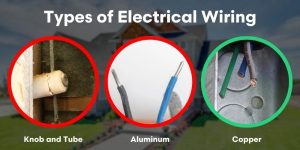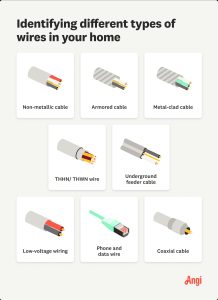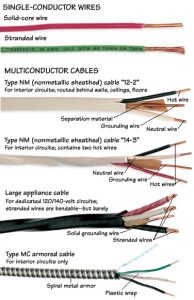


Wiring in Eastern Ontario Homes
Why Wiring Matters
The electrical system is the backbone of a modern home, powering everything from lights and appliances to heating, cooling, and smart technology. In Eastern Ontario, where housing stock ranges from century-old Victorians to brand-new subdivisions, wiring types vary widely. Understanding these systems is essential for safety, efficiency, and future upgrades.
Common Types of Wiring in Homes
1. Knob-and-Tube Wiring (K&T)
-
Description: Found in homes built before the 1950s, using ceramic knobs and tubes to run wires through framing.
-
Pros: Was reliable for its time; still functional if untouched.
-
Cons: No ground wire; insulation deteriorates; not suited for modern loads. Often a concern for insurance companies.
-
Regional Use: Frequently found in heritage homes in Belleville, Kingston, and older rural properties.
2. Aluminum Wiring
-
Description: Used widely in the 1960s–1970s as a cheaper alternative to copper.
-
Pros: Conducts electricity effectively, lower material cost at the time.
-
Cons: Prone to expansion/contraction, which can loosen connections, creating fire hazards. Many insurers require upgrades or approved connectors.
-
Regional Use: Common in mid-century suburban homes, still present in some properties.
3. Copper Wiring (Modern Standard)
-
Description: The current standard in home wiring, used since the 1970s to present day.
-
Pros: Durable, safe, excellent conductivity, supports modern electrical demands.
-
Cons: Higher cost than aluminum.
-
Regional Use: The norm in newer subdivisions and renovations across Quinte West, PEC, and Hastings County.
4. Armoured Cable (BX/AC)
-
Description: Copper wires encased in a flexible metal sheath.
-
Pros: Provides physical protection, good for renovations or exposed installations.
-
Cons: More expensive than non-metallic cable, trickier to work with.
-
Regional Use: Common in renovations, basements, and commercial-to-residential conversions.
5. Non-Metallic Sheathed Cable (NM/Romex)
-
Description: Plastic-sheathed copper wiring, widely used in modern construction.
-
Pros: Easy to install, cost-effective, safe for most residential applications.
-
Cons: Not suitable for exposed or outdoor use without conduit.
-
Regional Use: Standard wiring in virtually all new homes in Eastern Ontario.
Specialty Wiring and Systems
-
Low-Voltage Wiring: For doorbells, thermostats, security systems, and smart home tech.
-
Knockdown/Retrofit Conduit: Used in upgrades where existing walls make rewiring difficult.
-
CAT5/6 Ethernet & Coaxial: Increasingly installed for high-speed internet, streaming, and home offices.
-
Electrical Panels: Modern homes use breaker panels (100–200 amps), while older properties may still have fuses. Upgrading panels is often necessary for resale and insurance.
Safety and Upgrade Considerations
-
Insurance Requirements: Many insurers require upgrades if a home still has knob-and-tube or aluminum wiring.
-
Grounding: Modern systems include ground wires; older systems may lack grounding, increasing risk.
-
Capacity: Today’s homes need higher capacity panels to support electric heating, AC, EV chargers, and appliances.
-
Permits and Codes: Electrical work in Ontario must comply with the Ontario Electrical Safety Code and typically requires a licensed electrician.
Regional Perspective
-
Heritage Homes: Often require rewiring or partial updates, especially if original knob-and-tube or fuses remain.
-
Mid-Century Homes: May still contain aluminum wiring — an important check for buyers.
-
Modern Builds: Use copper with NM sheathing, larger service panels, and often pre-wiring for internet and smart home systems.
👉 In summary, wiring in Eastern Ontario homes ranges from historic knob-and-tube to modern copper systems with smart tech integration. When buying, selling, or renovating, understanding the type and condition of a home’s wiring is key to safety, functionality, and insurance eligibility.

